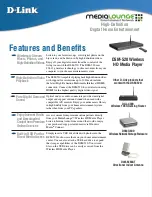SW2 - FIBER OPTIC TEST “FOT”
This DIP-switch will allow the entire fiber segment to be tested at either of the modules
without having to set DIP-switches on both modules. When this DIP-switch is set to
“FOT”, the local module (the module with the DIP-switch in the “FOT” position) is switched
into local loopback mode. In addition to the local loopback mode of operation, the fiber
TX port is encoded to carry a remote loopback protocol. This remote loopback protocol
sets the remote module at the other end of the fiber link to a remote loopback mode
of operation and returns a signal to the local module. A slow blinking “Tst” LED on the
local module and a fast blinking “Tst” LED on the remote module shows confirmation
that the fiber segment is communicating properly between devices. By returning the
DIP-switch to the “Norm” position, the module resumes normal operation.
BNC/UTP In
BNC/UTP In
BNC/UTP Out
BNC/UTP Out
Fiber Out
Local Module
Remote Module
Fiber Out
Fiber In
Fiber In
Source
Test
Rx
Tx
Fiber Optic Test Mode
SW3 - FORCE 1S TO FIBER “FO1”
When this DIP-switch is set to the “FO1” position, an “all ones” pattern is inserted
into the data stream being transmitted out of the fiber port on the module. Data being
received on the coax or twisted pair is disabled and data being received on the fiber
is passed through to the coax or twisted pair side. By returning the DIP-switch to the
“Norm” position, the module resumes normal operation.
SW4 - FORCE 1S TO COAX OR UTP “Cu1”
When this DIP-switch is set to the “Cu1” position, an “all ones” pattern is inserted
into the data stream being transmitted out of the coax or twisted pair port on the
module. Data being received on the fiber will be disabled and data being received on
the coax or twisted pair is passed through to the fiber side. By returning the DIP-switch
to the “Norm” position, the module resumes normal operation.
SW1 AND SW2 - AMI/B8ZS/HDB3 MODE
B8ZS (T1) or HDB3 (E1) is the default line encoding mode of operation. To select
AMI mode, enable both the Local Dual Loopback “Loop” and Fiber Optic Test “FOT”
DIP-switches on the front of the module.
PUSH BUTTON - MANUAL CROSSOVER “= / X”
The Manual Crossover “= / X” button located on the front panel is used to eliminate the
need for crossover and custom cables when connecting devices to the RJ-45/48 port.
When the button is in the out “=” position, the port is configured for a straight-through
cable. When the button is in the in “X” position, the port is configured for a crossover
cable. The twisted pair connection requires two active pairs in a T1/E1 environment.
The active pairs are pins 1 & 2 and pins 4 & 5. Only dedicated wire pairs should be
used for the active pins.
On Board DIP-Switches
Board Mounted DIP-Switches
ON and OFF refer to the direction for the settings. Setting the switch to ON would set
the switch towards the edge of the board. Setting the switch to OFF would set the
switch towards the center of board.
T1/E1 Copper Line Configuration Settings
The T1/E1 copper line codes and line lengths are configured using board mounted
DIP-switches. The default setting is all OFF.
Line Type
Port Type
Distance
DIP-switch Position
4
3
2
1
T1 DSX-1
RJ-45/48
0’ to 133’
OFF
OFF
OFF
OFF
T1 DSX-1
RJ-45/48
133’ to 266’
ON
OFF
OFF
OFF
T1 DSX-1
RJ-45/48
266’ to 399’
OFF
ON
OFF
OFF
T1 DSX-1
RJ-45/48
399’ to 533’
ON
ON
OFF
OFF
T1 DSX-1
RJ-45/48
533’ to 655’
OFF
OFF
ON
OFF
T1 DS1
RJ-45/48
0 dB
OFF
OFF
OFF
OFF
T1 DS1
RJ-45/48
-7.5 dB
ON
OFF
ON
OFF
T1 DS1
RJ-45/48
-15.0 dB
OFF
ON
ON
OFF
T1 DS1
RJ-45/48
-22.5 dB
ON
ON
ON
OFF
E1 75 ohm
Coax/BNC
Standard
OFF
OFF
OFF
ON
E1 120 ohm
RJ-45/48
Standard
ON
OFF
OFF
ON
E1 75 ohm
Coax/BNC
Standard
OFF
ON
OFF
ON
E1 120 ohm
RJ-45/48
Standard
ON
ON
OFF
ON
Page 6
Page 5


















